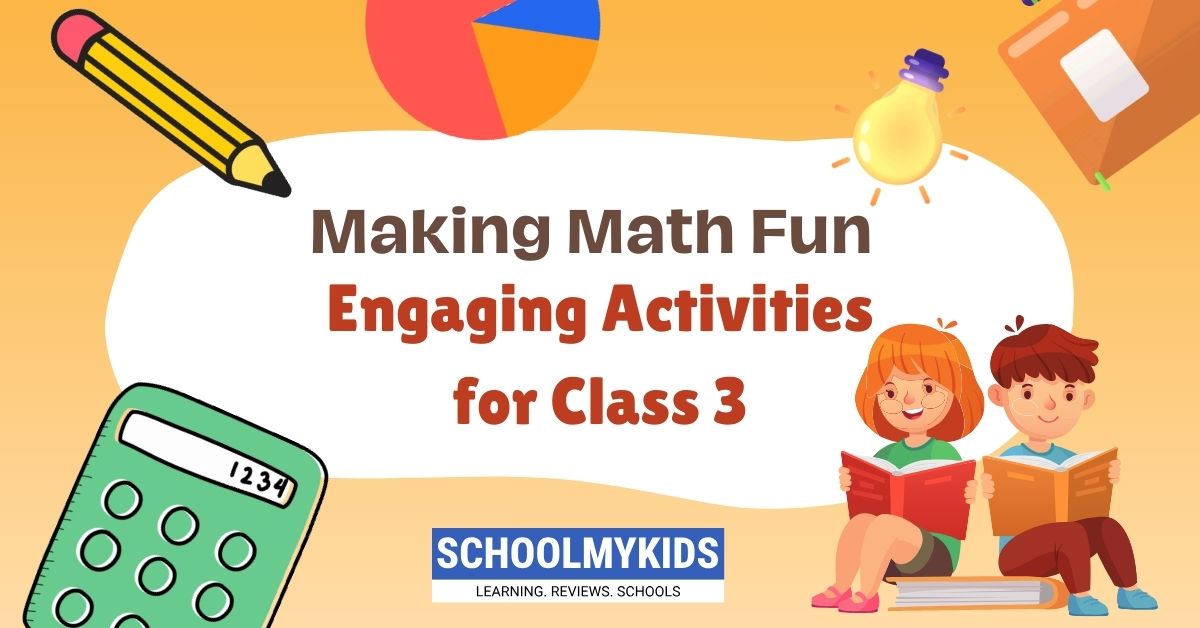Third grade is a crucial year for math development. Students are building upon their foundational skills in counting, addition, subtraction, and beginning to explore multiplication and division. While worksheets have their place, incorporating fun and engaging activities can solidify these concepts and make learning math enjoyable.
This article explores various maths activities for class 3, catering to different learning styles and fostering a love for numbers.
Building on the Basics
- Number Line Adventures: Create a giant number line on the classroom floor using butcher paper. Students can hop, skip, or jump along the line, landing on specific numbers based on instructions (e.g., hop two numbers forward, jump back one number). This activity reinforces counting and sequencing.
- Roll and Add/Subtract: This classic game gets an upgrade! Students take turns rolling dice, adding or subtracting the numbers depending on the pre-determined rule (addition for even rolls, subtraction for odd). The first player to reach a target number wins. This can be played individually or in pairs, promoting quick mental math practice.
- Shopping Spree: Set up a pretend classroom store with various priced items (use toy objects or pictures with price tags). Students create shopping lists with a set budget and practice addition to calculate the total cost. This incorporates practical application of math skills and introduces the concept of budgeting.
Multiplication Magic
- Multiplication Arrays: Multiplication becomes more concrete with arrays. Students use counters or building blocks to create rows and columns, visually representing the multiplication problem. Counting the total number of objects reinforces the concept.
- Flashcard Fun: While flashcards can feel traditional, add a twist! Create two sets – one with multiplication problems and another with the corresponding answers scrambled. Students race to match the problems with the correct answers, promoting recall and building fluency.
- Multiplication Bingo: This game is a class favorite. Prepare bingo cards with multiplication problems instead of numbers. The teacher calls out products (answers), and students mark off the corresponding problems that have that product. The first student with a complete row or card wins!
Exploring Division
- Sharing is Caring: Divide a bag of candies (or any manipulatives) equally among groups of students. Students then count the number of candies each person receives, understanding division as the process of separating a whole into equal parts.
- Fair Share Pizzas: Draw circles on the board representing pizzas. Divide each pizza into a specific number of slices (depending on the division problem). Students answer how many slices each person would get if the pizza is shared among a certain number of friends.
- Domino Delights: Use dominoes with dots to represent division problems. For example, a domino with 6 dots can be used for 6 divided by 2 (3 in each half) or 12 divided by 3 (4 in each set of three). Students can create their own division problems using dominoes, promoting creativity and problem-solving.
Beyond Calculations
- Shape Scavenger Hunt: Take the learning outdoors! Students go on a scavenger hunt around the schoolyard, looking for objects that represent different shapes (e.g., square window, triangular roof). Back in the classroom, they discuss the properties of each shape and categorize them.
- Measurement Mania: Provide students with rulers, measuring tapes, and various objects. They practice measuring the length, width, and height of different items, comparing and contrasting the measurements.
- Data Detectives: Collect data as a class on a chosen topic (e.g., favorite color, preferred fruit). Students create tally charts or pictographs to represent the data and answer questions based on the information collected. This introduces basic concepts of data analysis and visualization.
Remember
- Differentiation is key. Cater to various learning styles by offering a variety of activities.
- Make it visual. Use manipulatives, drawings, and charts to enhance understanding.
- Movement matters. Incorporate physical activities to keep students engaged and energized.
- Celebrate success. Acknowledge and praise students’ efforts, fostering a positive learning environment.
By incorporating these fun and engaging activities, math class in third grade can become a place of exploration, discovery, and a love for numbers!
Conclusion
By incorporating these fun and engaging activities, math class in third grade can become a place of exploration, discovery, and a love for numbers! Math is all around us, and these activities can help students develop a foundation for lifelong mathematical thinking and problem-solving skills. So, roll up your sleeves, grab some manipulatives, and get ready to make math a blast in your third-grade classroom!









Be the first one to comment on this story.